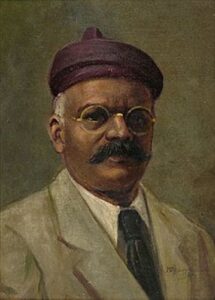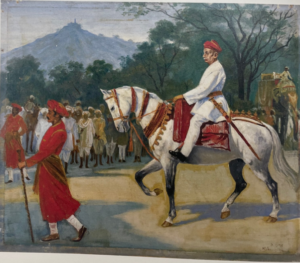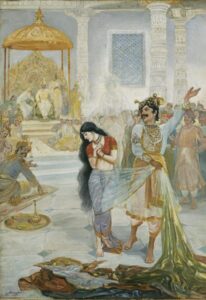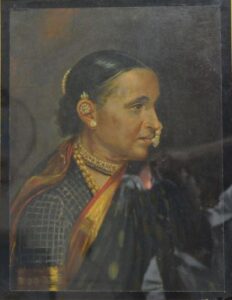Remembering MV Dhurandhar, multifaceted genius of Modern Indian Art

Some works by veteran artist MV Dhurandhar
Today (March 18, 2023) marks the 156th birthday anniversary of artist MV Dhurandhar, an Indian painter and postcard artist from the British colonial era. Best known for his mastery in bringing the characters and stories from Indian mythology to life through his paintings, Dhurandhar’s mythological works often depict the gods and goddesses of Hinduism, as well as scenes from great epics such as the Ramayana and the Mahabharata.
However, the lesser-known aspect of his grand oeuvre is several landscape paintings he created. Dhurandhar’s landscape paintings capture the beauty and majesty of the Indian countryside. He was particularly interested in portraying the rural landscapes of Maharashtra, where he grew up – rolling hills, lush forests, and tranquil water bodies. At times, he also incorporated human figures and animals in his works, adding a sense of life and movement to the landscapes.
Sneha Gautam, Vice President – Client Relations at AstaGuru Auction House, an online platform involved in Modern and Contemporary Art among other items, writes about veteran artist’s life and art.
MV Dhurandhar, self-portrait
Dhurandhar was an academic realist artist from the early 20th century and one of the most respected figures in the development of modern Indian art, though he was not very well known among the general public. His exceptional creations still captivate art enthusiasts, and his works serve as the crowning glory of several important museums and collections in the country. They also remain highly coveted by collectors of modern Indian art.
Born in 1867 in Kolhapur, Dhurandhar received his art training from Sir JJ School of Art where he was encouraged by the principal John Griffiths to commit himself to painting. While still a student, he won a British Government Award in 1892. In the year 1885, he won a gold medal from the Bombay Art Society.
Often drawing inspiration from famed fables of Indian mythology, the master portraitist created a large treasure trove of paintings devoted to Hindu deities. In an untitled oil on canvas painting executed in 1922, the artist skillfully portrays the pivotal moment in the Mahabharata, known as Draupadi Vastraharan (pic below). This event, in which the Kaurava brother Dushasana disgraces Draupadi, sets in motion the epic battle at Kurukshetra. The artist expertly captures a range of emotions, deftly rendering the faces of the protagonists, antagonists, and others in the scene with a sense of urgency and power. The result is a brilliant interpretation of this critical moment in Indian mythology.
Draupadi Vastraharan
While he is most revered for these religious works, MV Dhurandhar’s oeuvre is rich with a fusion of genres. His landscape paintings capture the beauty and majesty of the Indian countryside. He was particularly interested in portraying the rural landscapes of Maharashtra, where he grew up. His paintings often depict rolling hills, lush forests, and tranquil water bodies such as lakes and rivers. He also frequently incorporated human figures and animals in his works, adding a sense of life and movement to his landscapes.
With his portraits, he captured and dwelled on the scenes of human drama. In Portrait of Narmada Dhurandhar (pic below), he depicts a profile of his mother. As a representation of a traditional elite Marathi woman, she is depicted wearing a black Paithani saree adorned with golden zari, as well as nose and neck ornaments. The artist was also a skilled observer of life, effortlessly capturing social norms and mores in his artwork.
Portrait of Narmada Dhurandhar
He also contributed with his art for oleographs, book covers, illustrations as well as advertisements. His works were particularly in demand to illustrate books about India. He illustrated Otto Rothfeld’s book Women Of India (1920), Percival and Olivia Strip’s The Peoples Of India (1944), as well as By-Ways of Bombay (1912) by SM Edwardes.
Also, an accomplished writer, the genius of MV Dhurandhar was multifaceted. His contributions to the development of modern Indian art cannot be overstated. Dhurandhar’s art captured the essence of Indian culture and society, from its rural life and religious traditions to its rapidly changing urban landscape. His legacy continues to inspire and influence artists in India and beyond.






